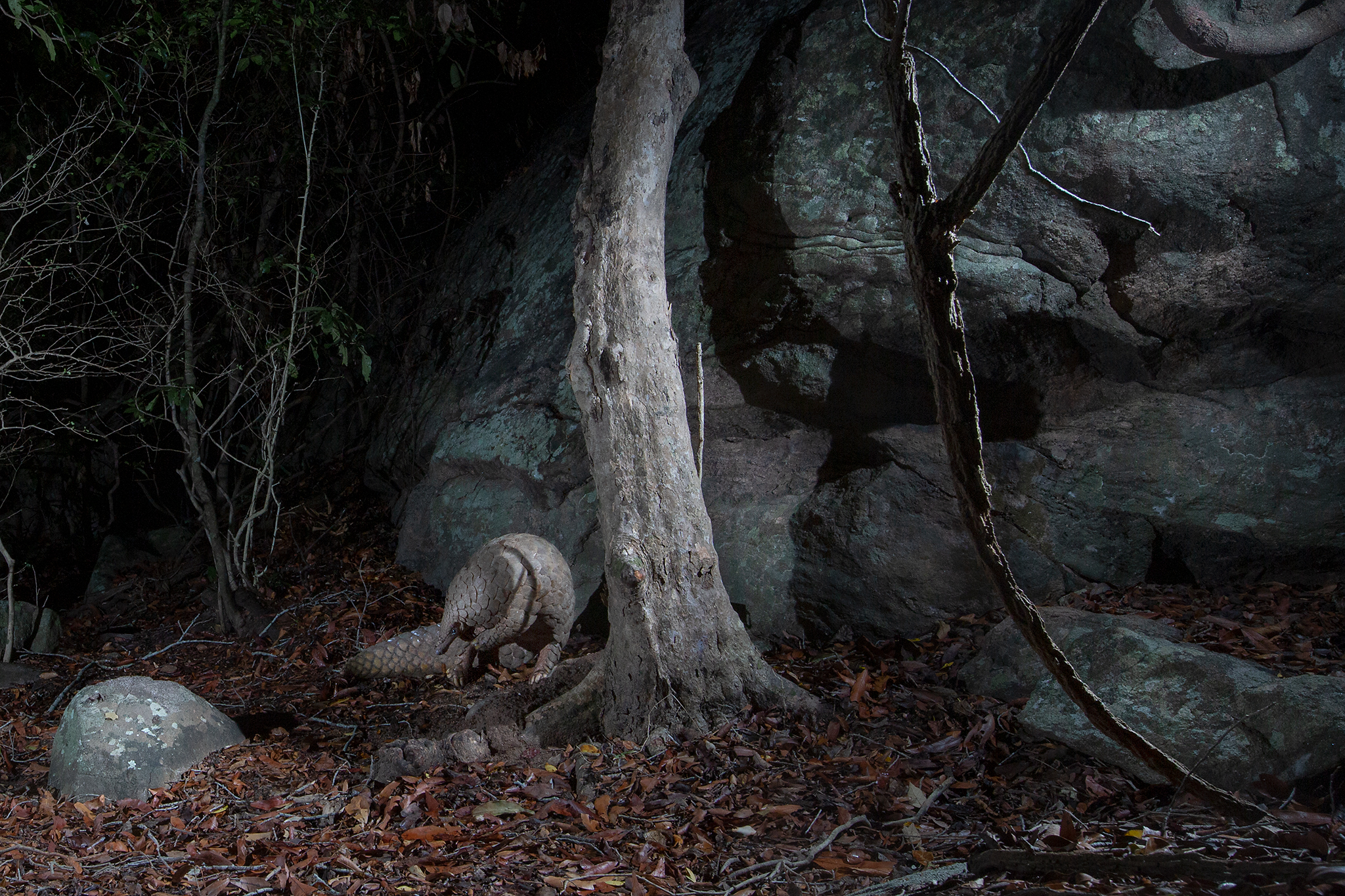

Indian pangolins (Manis crassicaudata), also known as scaly anteaters, are burrowing mammals that primarily feed on termites and ants. They possess a long, sticky tongue that aids in capturing their prey. One of their most distinctive features is their rigid, scaly armour, composed of keratin, which gives them a unique appearance.
These solitary and nocturnal creatures are excellent climbers and can be found in various habitats, including moist tropical forests, dry deciduous forests, evergreen forests, and grasslands. Despite their small size, pangolins are strong animals that can defend themselves effectively. When threatened, they curl up into an armored ball with their limbs tucked tightly inside. This defensive posture makes it difficult for most predators to unravel them. Additionally, pangolins can produce foul-smelling secretions from their anus, and they may hiss when feeling threatened.
During the breeding season, the Indian pangolin typically gives birth to a single offspring. The mothers care for their young in nesting burrows, creating a safe environment for them to grow. The young pangolins often accompany their mother outside the burrow by riding on her tail or back.